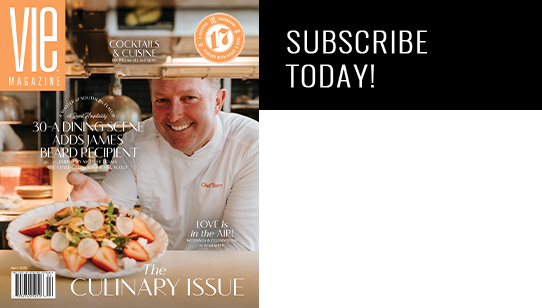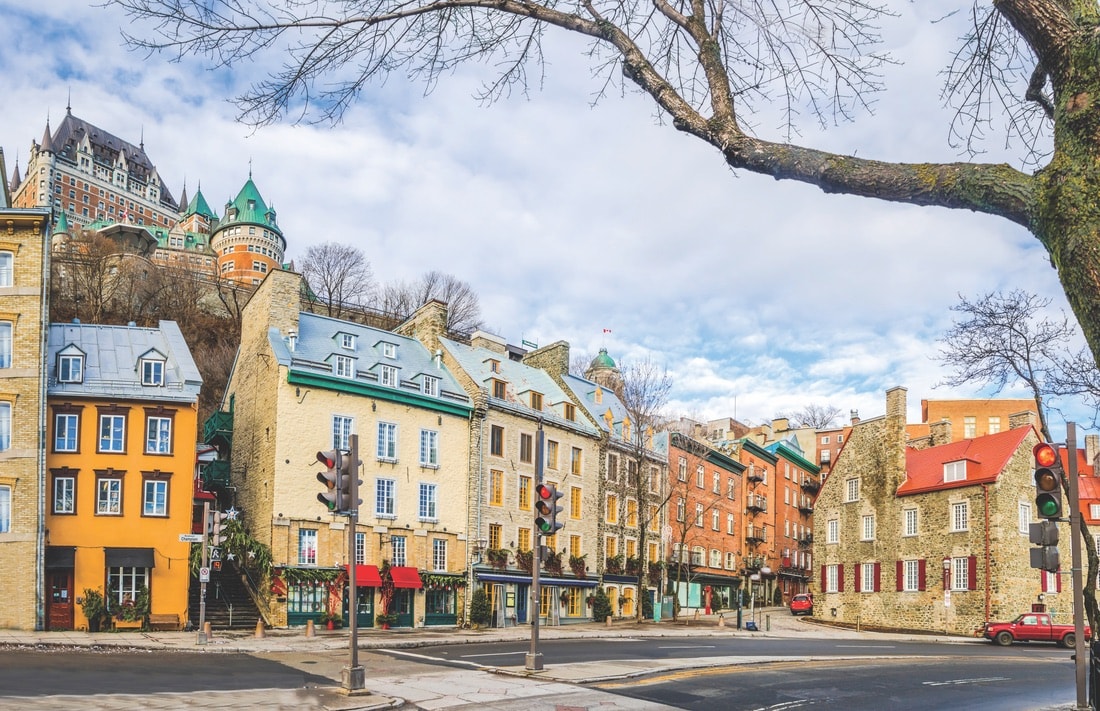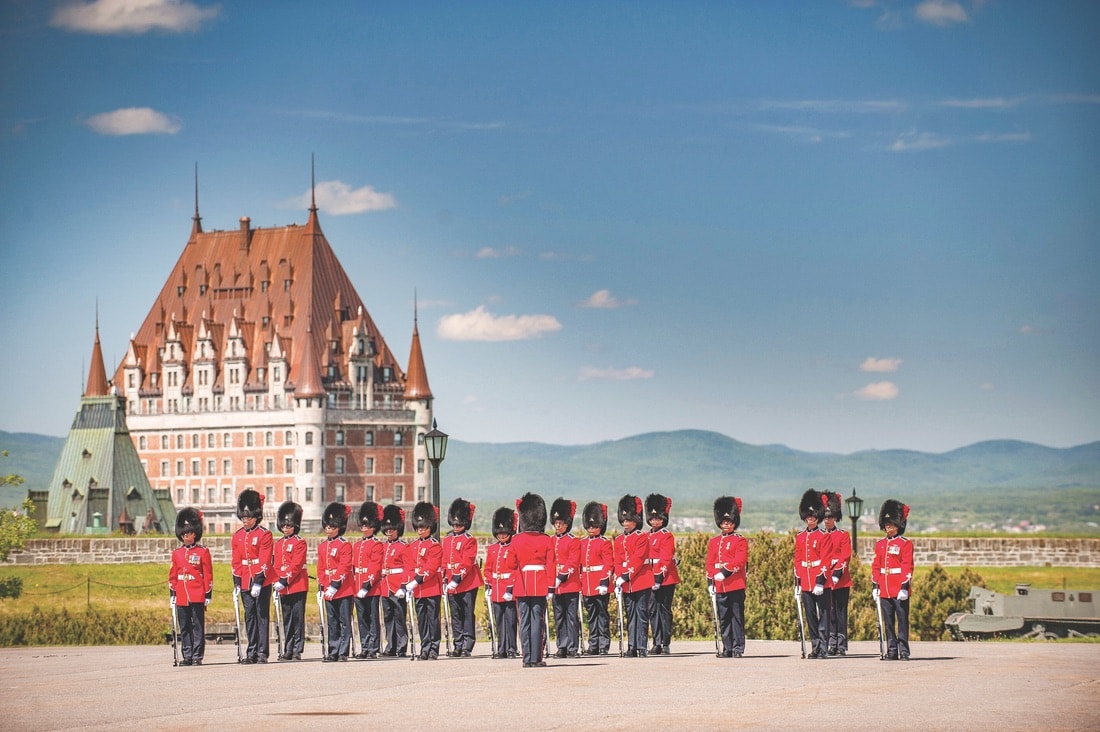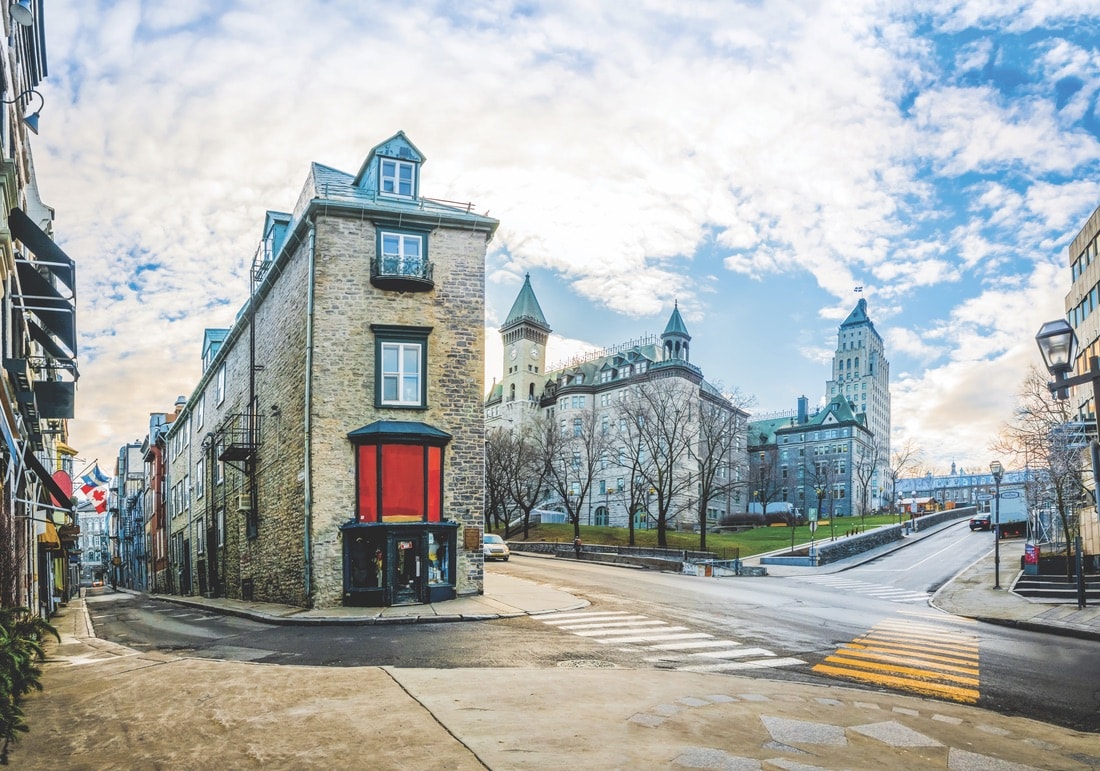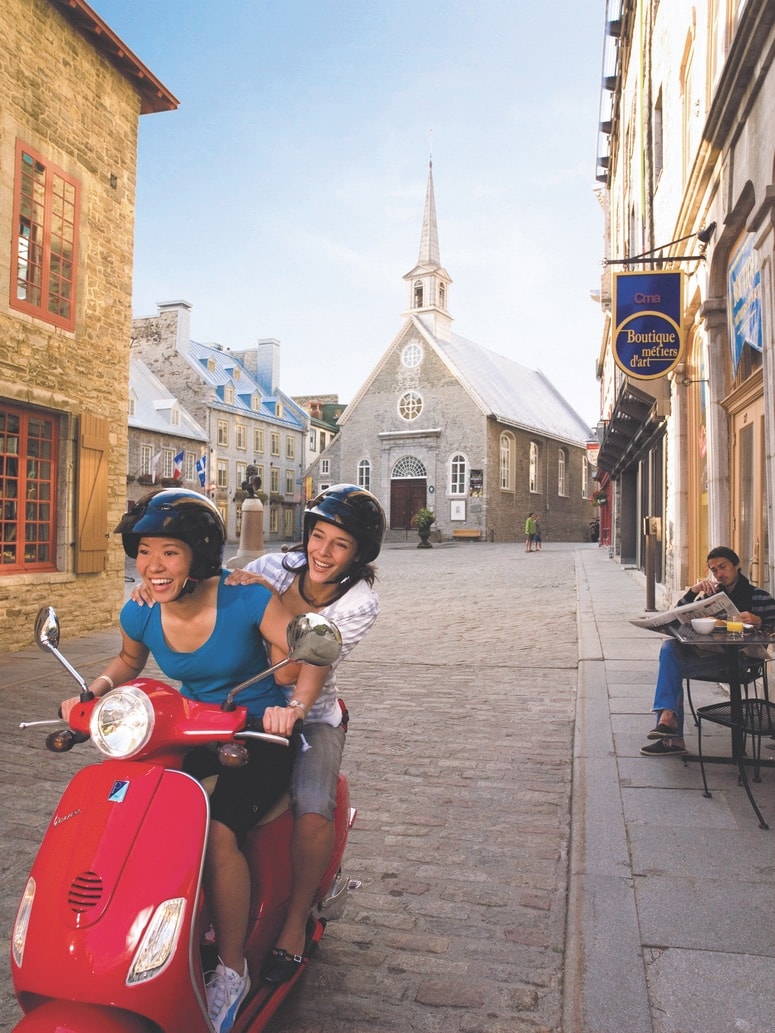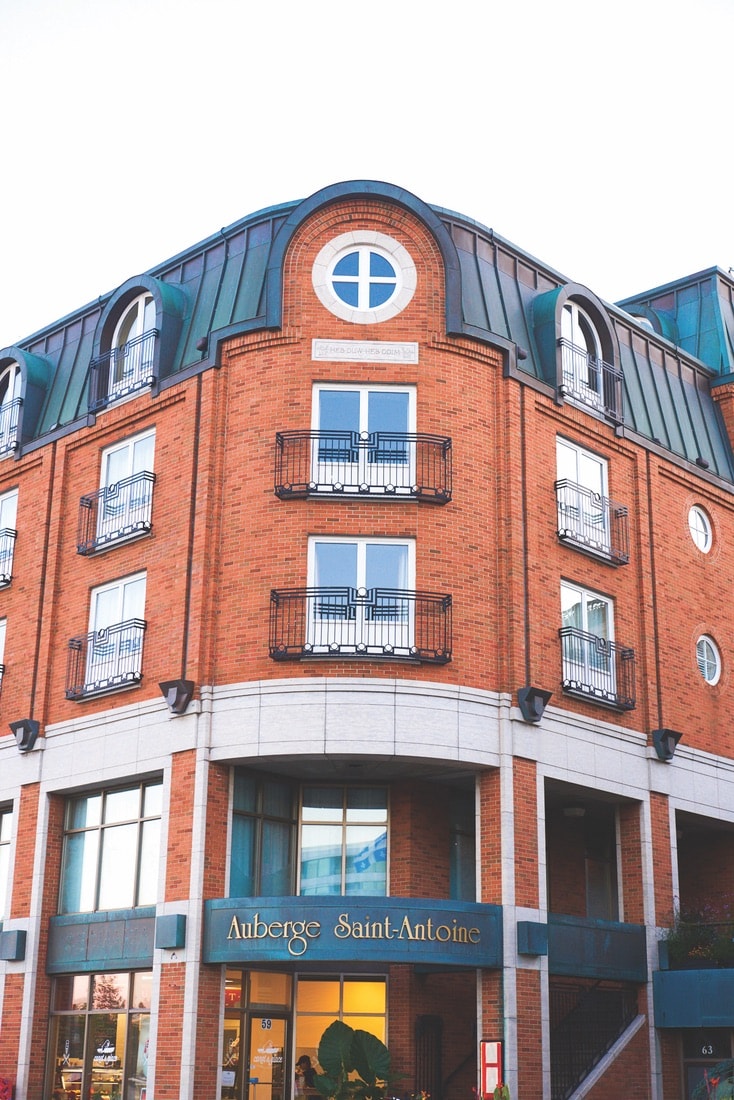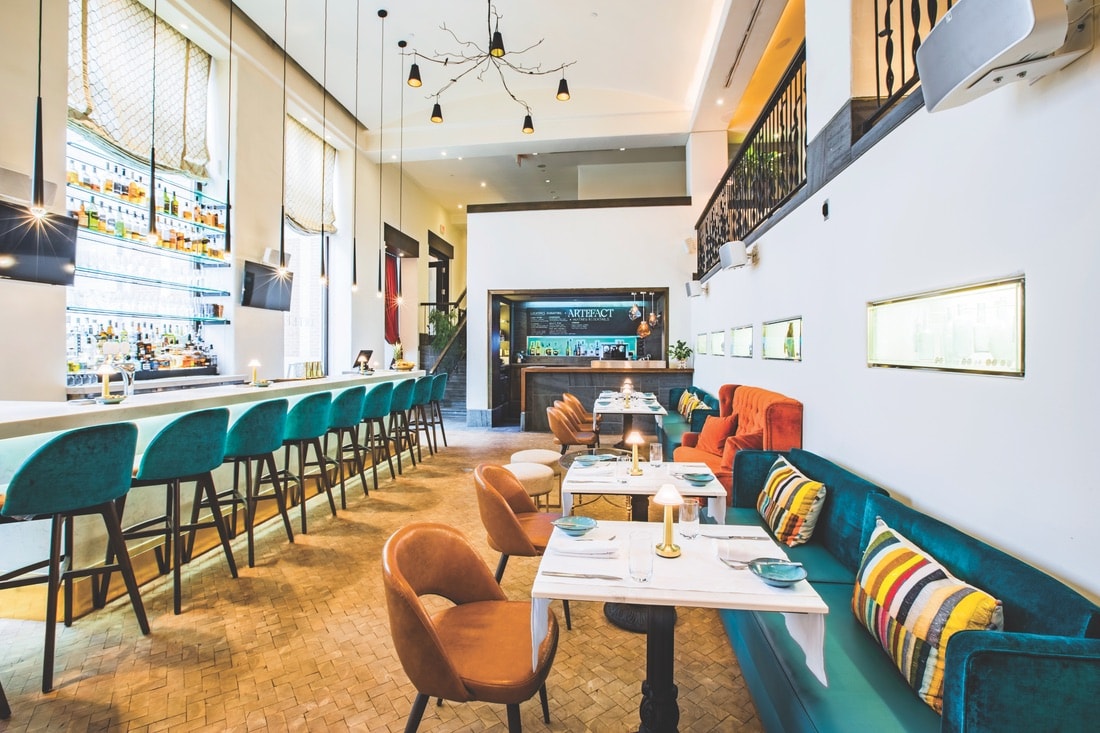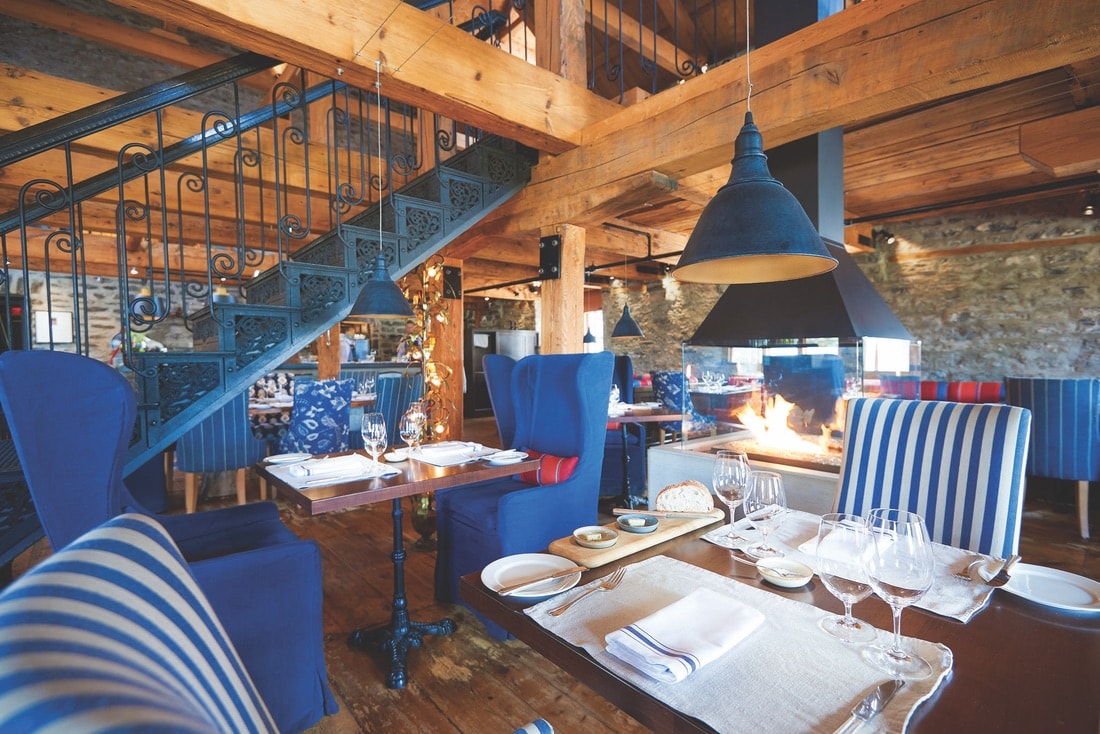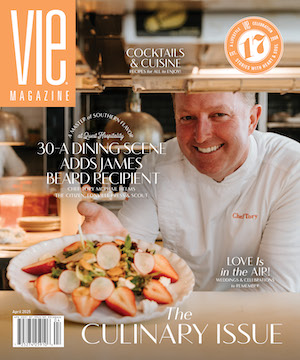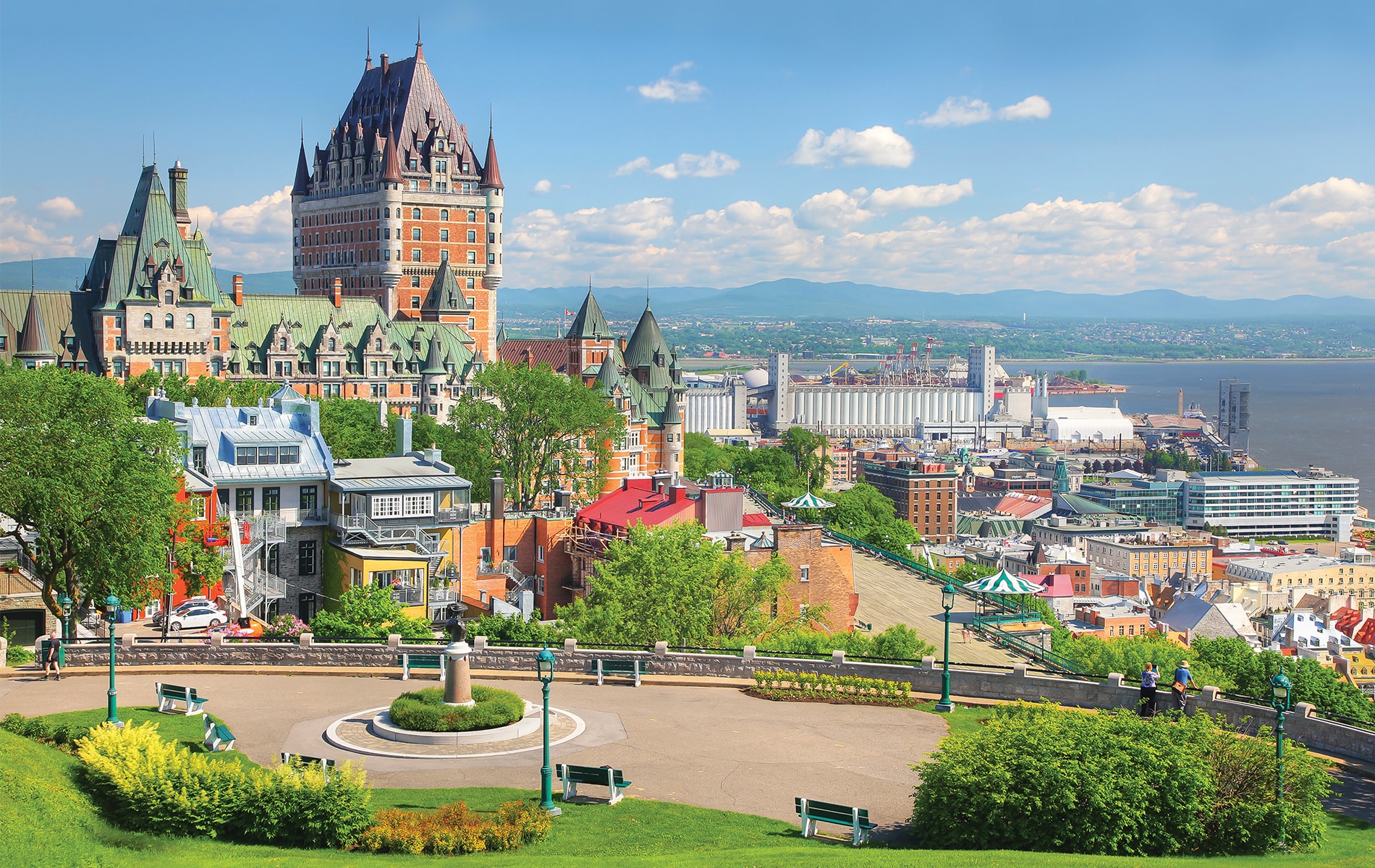
vie-magazine-quebec-hero-min
Take a stroll along the promenade for a glorious view of Château Frontenac in Old Québec City.
French Canadian Charm
Une visite à Québec City
By Carolyn O’Neil
Perhaps the fastest route to finding the culture and cuisine of France is to stay on this side of the Atlantic and head north to Québec City. Set in the Canadian province of Québec, this historic metropolis is as French as you can get in North America. When Samuel de Champlain founded it over four centuries ago on the banks of the Saint Lawrence River, Québec City became the capital of New France and one of the region’s most important ports for colonial goods, most notably furs.
Today Québec City invites visitors to enjoy strolls along charming cobblestoned streets and revel in the energetic mix of modern bistros, delightful little shops, and elegant art-filled hotels.
Bring your best bonjour and bonsoir as you step into the fairy-tale allure of Québec City.
- Lower Town (Basse-Ville) and Château Frontenac are like scenes from a storybook.
- Photo by Olivier Lavigne-Ortiz
- The architecture of Québec City is a prominent indication of its European roots
Welcome (Bienvenue) to Québec City
Set dramatically high above the wide Saint Lawrence River, Québec City appears as an old-world fortress, complete with stone walls, ramparts, and gates. But these centuries-old structures and streets are alive today with restaurants, bars, shops, music venues, art galleries, and fascinating museums. Old Québec (Vieux-Québec) was named a UNESCO World Heritage Site in 1985. Regimes from England and France took turns ruling here, and today visitors will find remarkably well-preserved examples of the city’s architectural, religious, and military histories as they stroll along the quaint narrow streets.
When planning your visit—and to quickly get your bearings once you’re there—think of the area in two parts: the upper town and the lower town.
The Funicular
You can hike up or down the hilly streets, but the best way to take in the view—and take a trip back in time—is to ride the funicular. Built in 1879, the cable cars carry passengers at a forty-five-degree angle as an easy form of transportation between upper and lower Québec. Hold on for the ride!
Vibrant Upper Town (Haute-Ville)
There’s so much history to discover in the Upper Town of Québec City. In summer months, you can watch the Changing of the Guard at the Citadelle of Québec, the largest active fortress in North America. The Musée Nationale des Beaux-Arts du Québec, with thousands of works dating from the 1600s to today, is located on the Plains of Abraham, where the British and French met in a historic battle. The open grassy plain is also a great place to go for a run or have a picnic. There are seasonal outdoor events held here, so check the activities calendar on the tourism website QuebecRegion.com.
In summer months, you can watch the Changing of the Guard at the Citadelle of Québec, the largest active fortress in North America.
Towering above Upper Town is the imposing Château Frontenac hotel. Built in 1893, its architecture, with spires, turrets, and slanted green copper roofs, is in the style of Loire Valley châteaux. Nearby, you can promenade along the Terrasse Dufferin, a wide boardwalk overlooking the river with open-air pavilions and streetlamps. Climb even higher (with the help of an elevator to the twenty-eighth floor of Hôtel Le Concorde) to dine at Ciel! Bistro-Bar, a revolving restaurant. Experience Québécois cuisine with a lighter touch and a panoramic bird’s-eye view of the landscape fanning out to the horizon. It takes an hour and thirty minutes for the restaurant to make a full revolution—just enough time to sip and savor dishes and drinks from a menu that features many regional products. Toast with a sparkling wine produced in Québec, made in the style of fine brut champagne. CielBistroBar.com
Lovely Lower Town (Basse-Ville)
Old Québec’s Lower Town is the city’s original settlement. The narrow cobblestoned lanes and Colonial-era homes make you feel as though you’re wandering through a quaint European village. Walking is the best way to explore the chocolate shops, fashionable boutiques, and art galleries. Think you know maple syrup? The selections in specialty shops here offer a sweet lesson in the many uses for the sap from Canada’s national tree; these include creative candies and varieties of syrup, many of which come in impressive collectible containers.
If you arrive at an open plaza in Lower Town, you’ve found the Place-Royale. Beautifully restored buildings, many with flower-filled window boxes, surround this picture-perfect square just steps away from the Old Port. For visitors wondering what it was like to live here in the 1600s, docents dressed as historical figures (including Samuel de Champlain himself) explain it all at the Musée de la Place-Royale.
When it’s time to sit down, there is an impressive array of little restaurants where you can savor the area’s world-class cuisine for a light bite, a long lunch, or a romantic dinner. Here are three top picks:
- Seeing the sights in Place Royale is more fun on two wheels! | Photo by Camirand Photo
- The Auberge Saint-Antoine is a nineteenth-century warehouse-turned-boutique hotel that offers unique tidbits of Québec City history with every stay. | Photo courtesy of Auberge Saint-Antoine
Louise Taverne & Bar à Vin
Located on the rue Saint-Paul, this tavern’s namesake is Louise Caroline Alberta, Queen Victoria’s sixth child. Known as the “rebel princess,” she was the wife of the governor general of Canada from 1878 to 1883. She spoke French fluently, supported the country’s arts, and loved visiting Québec City. The menu at Louise is an exciting (shall we say a bit rebellious?) take on regional cuisine. Enjoy the outdoor patio, the lively wine bar, or the open kitchen so you can watch chef Nikolas Couture and his team of passionate sous chefs at work. This relatively new gourmet tavern has a menu for all tastes, from fish and chips made from fresh-caught Canadian cod to an adventurous dish of braised lamb testicles. A portrait of Princess Louise graces the main dining room. LouiseTBV.com
Restaurant Toast!
Known for elegant and inventive multicourse tasting menus, this intimate restaurant with chef Christian Lemelin at the helm pleases guests with precise presentations and Canadian ingredients. Wild flax seed oil anyone? On a chilly night, the Québec veal sirloin with mushrooms and poached potatoes is just the thing to warm you up. This is the place to get your foie gras, sourced from Le Canard Goulu farms. RestaurantToast.com
- Bar Artefect, the hotel’s second eatery, is the perfect place to grab coffee, tea, cocktails, and light bites. | Photo courtesy of Auberge Saint-Antoine
- Chez Muffy at the Auberge Saint-Antoine serves farm-to-table cuisine in a relaxed and charming atmosphere. | Photo courtesy of Auberge Saint-Antoine
Chez Muffy
The cheerful pop of royal-blue armchairs welcomes you to this ferme à fourchette (farm to fork) restaurant set inside a nineteenth-century warehouse with stone walls and massive wood beams. Located at the Auberge Saint-Antoine, the cozy room fills up with locals having breakfast meetings or leisurely lunches (this is in the French style!) and discerning dinner guests who know they can choose from an impressive wine list. Chef Julien Ouellet’s menu is a classic French celebration of Canadian products, such as Atlantic halibut, Nova Scotia lobster, and a selection of cheeses from the dairies of Québec. The restaurant has a farm on nearby Île d’Orléans, an agriculture-rich island in the middle of the Saint Lawrence River. Saint-Antoine.com
Auberge Saint-Antoine
Not to be missed for a hand-crafted cocktail by the fire and certainly the ultimate maison for your stay in Québec City, the elegant boutique hotel Auberge Saint-Antoine is a living museum. Set on a site once home to fur traders and merchants in the 1680s, the hotel is owned by a prominent local family dedicated to preserving history. Over seven hundred artifacts found during improvements and excavations are displayed in glass cases throughout the hotel. These lost-and-found items include shards of pottery, bits of china, broken glass, iron keys, clay pipes, and even a pair of spectacles. Descriptions tell a short story of what year they might be from and who might have owned them. Beside each guest room door, there’s a unique artifact, and a piece from the same cup or bowl is set into the room’s glass-topped bedside table. Can’t remember your room number? Tell the concierge it’s the one with a fragment of green glass outside.
The hotel has ninety-five spacious guest rooms and suites located in three connected historic buildings. Each room is individually designed—you can relax in a comfy space with a view of the Old Port that could have been for a sea captain or in a sleek contemporary suite with its own remote-controlled fireplace and a terrace. While there’s a deep respect for history, the hotel is firmly focused on modern comforts, from the heated bathroom floors to the fitness facility complete with spa and yoga studio.
The sleek and inviting Bar Artefact, located down a dramatic staircase in the hotel’s open lobby, is a hive for Québecois society and culture.
The sleek and inviting Bar Artefact, located down a dramatic staircase in the hotel’s open lobby, is a hive for Québecois society and culture. You might take in a pop-up fashion show of Canadian designers or chat with locals over an Aphrodite martini made with ginger, lychee, and lime. Or, hide away in a little alcove with a glass of vin blanc or vin rouge and admire the beverage-themed artifacts chosen as artwork in the bar. Raise a glass to the hotel’s namesake, Saint-Antoine, the patron saint of lost things. Saint-Antoine.com
Je me souviens
The motto of Québec is Je me souviens—“I remember.” If your holiday plans include an escape to a place to practice your French and stroll through storybook streets alive with history on your way to enjoy a glass or two of wine, remember you needn’t travel farther than the Canadian province of Québec.
— V —
Carolyn O’Neil is an Atlanta-based food writer who specializes in culinary travel and healthy lifestyles. She believes travel is the ultimate way to learn about people of the world, and cuisine is the most exciting way to learn about their history and culture. Find her blog at TheHappyHealthyKitchen.com.
Share This Story!
KEEP UP WITH THE LATEST STORIES FROM VIE


